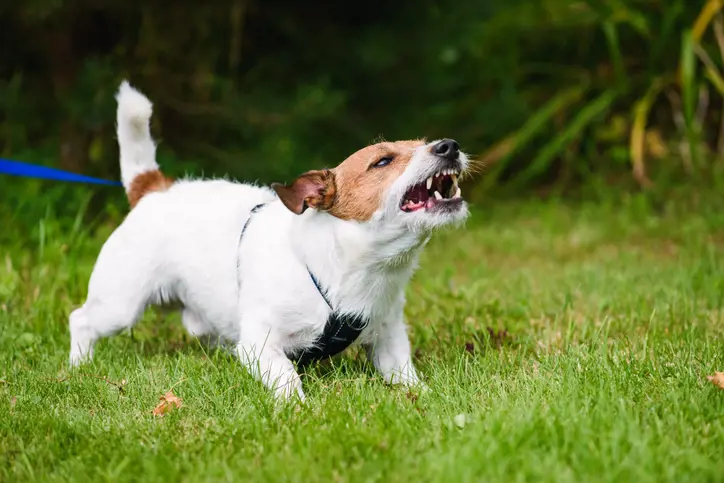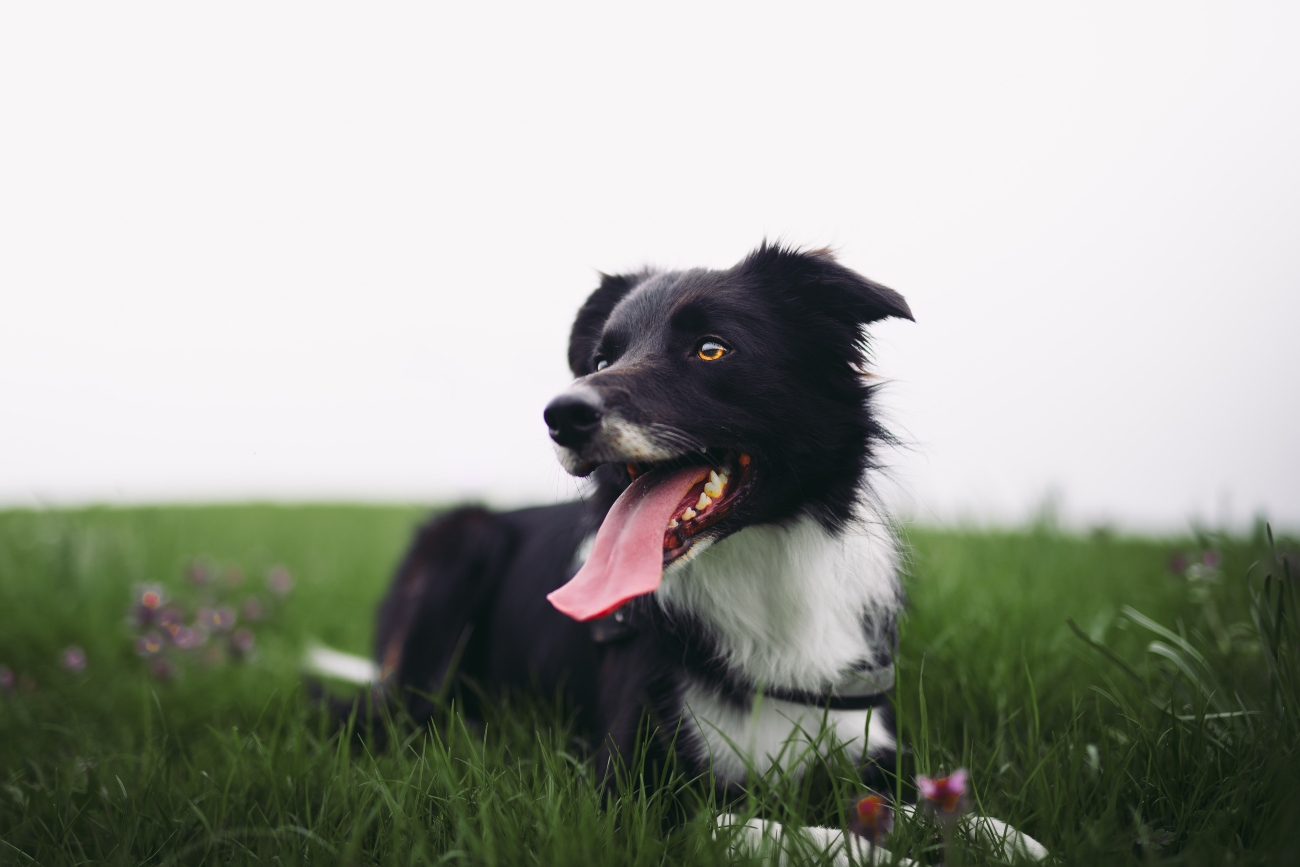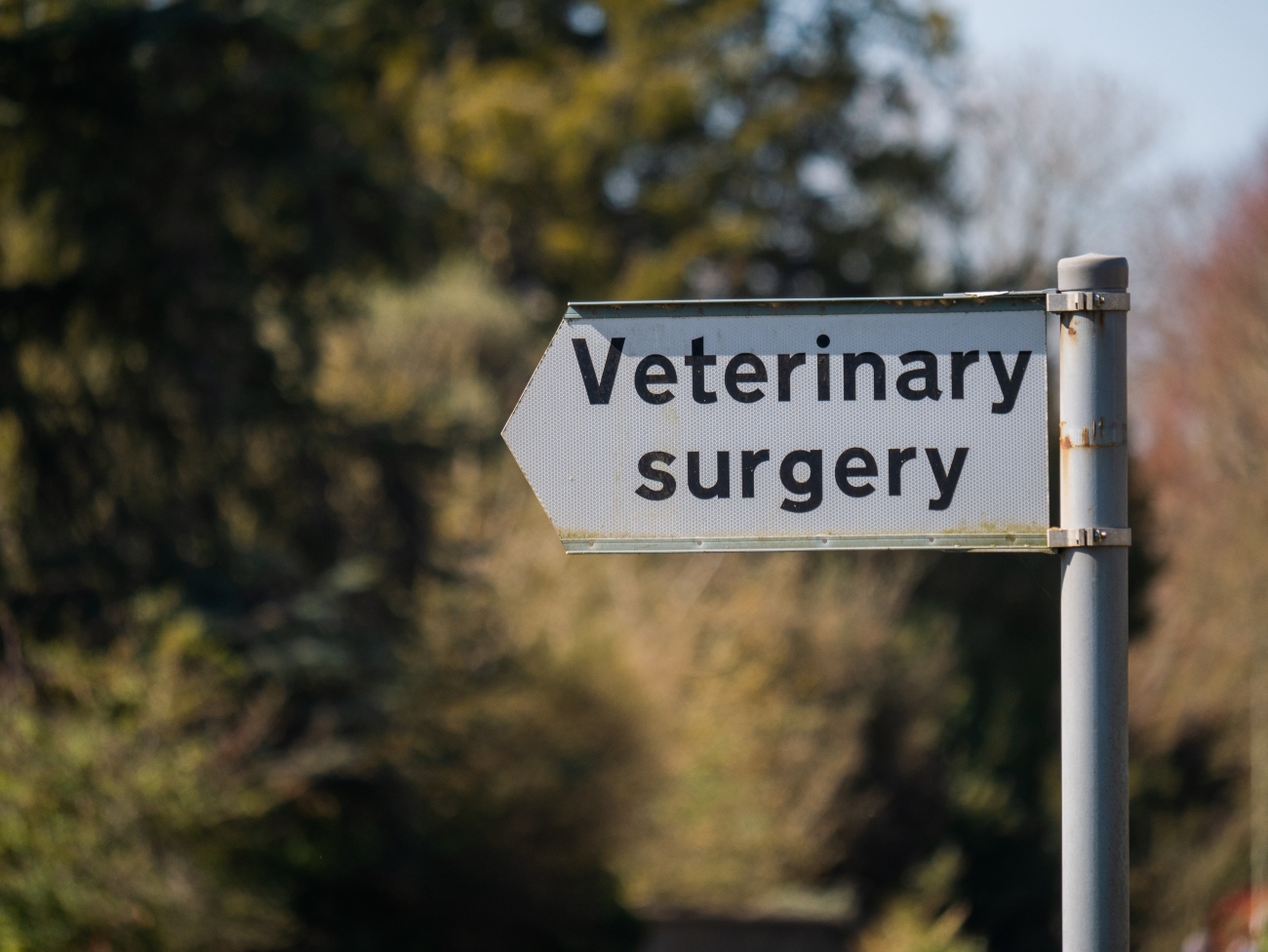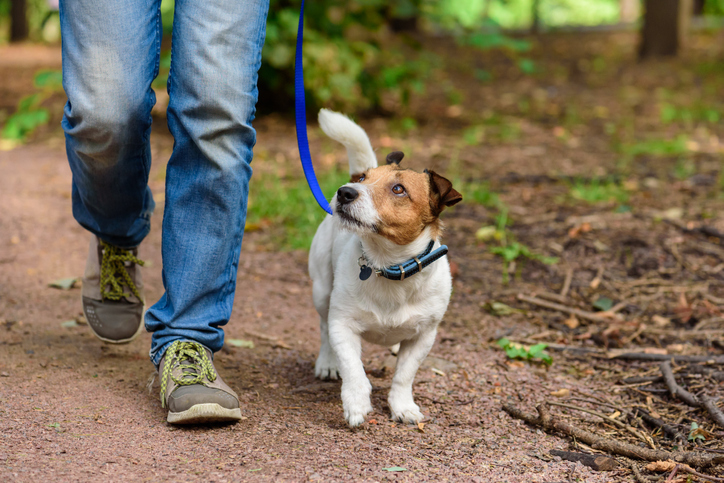How to handle dog attacks
23rd June, 2022

It’s every dog owner’s worst nightmare – your dog is involved in an attack, either with another dog, a person or their property. Even the most peaceful and well-trained pups can start to behave aggressively if they feel frightened or under threat.
They may be picking up on a perceived threat in their current situation. Or sometimes, a painful or frightening past memory can be triggered by finding themselves in a similar situation. This can be especially true of rescue dogs that may not have had the best of starts in life.
Witnessing a dog – whether your own, or an animal belonging to someone else – in this aggressive state can be quite upsetting. And, of course, there’s always the risk that someone might get hurt.
In this article, we’ll look at what steps you can take – both to avoid an attack, and to minimise the damage from one, if and when it takes place. And we’re going to look at this possibility from both perspectives: with your dog as the aggressor and the victim.
You never know what might spark an attack. That’s why third party dog insurance is so important. It can protect you from the financial fallout of an attack and the vet bills or compensation claims that might follow.
Here at Purely Pets, each of our levels of dog insurance – Lifetime Bronze, Silver and Gold – includes a generous amount of third party dog insurance to safeguard against unfortunate events like these.
How common are dog attacks?
We should begin, really, with a clarification. In reality, dogs seldom actively ‘attack’ each other. They are, by their nature, social animals who are happiest when they’re getting on with others of their own type. The majority of dogs will generally avoid situations that have the potential for aggression.
So, what triggers dogs to behave aggressively? Well, they will normally only go into ‘attack’ mode when they feel that this is the only way out of a stressful or frightening situation.
Essentially, a dog that is behaving aggressively is merely trying to defend itself from what it perceives as a threat. This may be a sudden fright that they have received – or they may have signalled their growing unease via various signs, which have all been ignored, leaving them with only one option remaining.
There are, however, a few exceptions to this general rule of canine conflict avoidance. For example, some dog breeds have a high ‘prey drive’, which means that they have a natural instinct to chase and even bite smaller animals. If the latter runs away, this, unfortunately, only stimulates the dog further.
Dog breeds with a high ‘prey drive’ are, in general, those breeds that have been bred to hunt or to herd. These breeds include Border Collies, while traditional ‘hunting’ dogs with high prey drive include Airedale and Bull Terriers, Beagles and Greyhounds, and ‘sporting’ dogs such as Retrievers, Spaniels and Pointers. If you own a breed with a high ‘prey drive’, you should be particularly vigilant in ensuring that they don’t accidentally hurt other animals.
Steps you can take here include securing your home and garden, so that they don’t bolt out after prey; and keeping them on a lead as much as possible when out and about. We would also suggest that a decent level of third party dog insurance is particularly valuable for breeds like these. After all, one of these hunting incidents could easily end painfully – and, for you, expensively.
Also make sure that you always keep dogs on a lead when they are around livestock. If your dog does injure a farm animal, there could be serious penalties awaiting both you and your pet. You’ll find our guide to keeping your dog safe around livestock useful here.

What are the signs your dog might attack?
A dog’s most visual signs of aggression, immediately before they resort to biting, include snarling, growling, and snapping. They may also bare their teeth. However, if you’re witnessing these signs, the dog is already extremely agitated, and an attack might be imminent. You should definitely try to defuse the situation – by removing your dog from the scene, whether or not they are the animal displaying these signs.
To avoid things getting this far, you should get to know the early warning signs of stress or discomfort in your pup.
A tense, anxious dog will do some or all of the following:
- Turn away and refuse to look you in the eye.
- Walk low to the ground – or stand in a tense, crouched position.
- Show the whites of their eyes.
- Lick their lips.
- Pin their ears backwards, so that they are flattened onto the head.
- Move or turn away from another dog who is causing them stress.
If your canine is displaying any of these behaviours, you should start by giving them space. Sometimes, a dog just needs a little quiet time, away from people and other animals. After a few minutes, they may be happy and ready to play again. Never force a dog to play – either with people (especially children) or other dogs. This may only raise their stress levels.
If your dog does start to growl, you may interpret this as an unwelcome sign of aggression – and you may scold them for it. However, dogs should never be punished for growling. In fact, by doing this, they are merely trying to communicate that they are unhappy with a situation, and giving you some valuable advance warning before things get worse. If your dog is growling, you may already have missed some early warning signs. Trying to punish the growling habit out of them could simply result in them progressing straight to the attack stage without any warning.
If, on the other hand, it’s another dog that’s displaying some of these anxious or aggressive behaviours, your best course of action is to remove yourselves, calmly but quickly, from the scene. If you can, get some kind of barrier – whether it’s a fence or a parked car – between your dog and the aggressive animal. Don’t allow your own pet to approach the latter, as this will only exacerbate the situation. And don’t try to intervene – it’s not uncommon for owners to get bitten themselves while attempting to break up a dog fight.
In fact, we’d always advise asking another dog’s owner for permission before you allow your dog to interact with theirs. The owner may warn you that their dog doesn’t generally like to be approached by other dogs. Even if all seems well, it’s better to ask first - just to be on the safe side.
What to do if your dog gets attacked
If the worst does happen and your dog does suffer an attack from an angry or aggressive canine, there are certain steps you should follow – both to minimise your own dog’s pain and fear, and to defuse the situation.
First of all, don’t panic. Dogs pick up on human emotions very easily, and any signs of stress from you will only escalate the stress levels of both your dog and their aggressor. Remaining as calm as possible will be a much better option.
Don’t try to intervene in the fight yourself. It’s only natural, as a loving owner, for you to want to step in and remove your dog from this frightening and potentially painful situation. But you should not get involved while the fight is in progress. Entering the fray merely puts you at risk of injury yourself. Or, your presence may only agitate the other animal still further, and they may lash out again at you and your dog.
Instead, remain at a safe distance and try to distract the other pup. Of course, their owner should be intervening at this stage: but you can also help by trying to distract the animal. A loud noise – such as a clap, for example – can be effective here. Avoid shouting directly at the dog, though, or making eye contact with them. These signals will only add to their own threatened feelings, and make them more likely to bite again.
Try to call your dog away from the situation. Once you’ve managed this, if they have been injured, you can report the incident to the police by calling 101. This is the standard police non-emergency number, which automatically connects you to your local force. You should also report the attack to your local council's dog warden, which you can find online by Googling your local council and the phrase ‘dog warden’.
After this, you should ask the other owner for their contact details, and also (if the situation allows for it) take a photo of the aggressive dog. Also make a note, or take pictures, of any injuries that your dog has sustained.
Now, ask the owner whether they have third party dog insurance. If they do, their insurance policy may pay out for the costs of any medical or veterinary treatment that your dog requires.
Lastly, take your dog to the vet as soon as you can. They may not appear to have sustained any serious injuries, but you can’t be certain of this until a professional has looked them over. All may look well at skin level, but a bite from the other dog could have caused damage to internal organs. What’s more, dogs’ mouths carry bacteria – so it’s quite possible that the bite may have passed on an infection.

What to do if your dog attacks another dog
This is another difficult situation, though in a different way to the previous scenario. If your dog is the victim of an attack, you will feel frightened and anxious for their health and welfare. If, on the other hand, your dog is the attacker, feelings of powerlessness or embarrassment may be uppermost in your mind. However, much like the scenario above, the key thing here is to remain calm and to take a few key practical steps to minimise the impact of the situation.
While remaining calm – any sign that you are agitated will only cause your dog more anxiety – try to distract them from a distance. Once again, avoid shouting or making eye contact. Try to call them away, or show them a favourite toy. If you have a large coat with you, you may be able to carefully throw this over them to distract your dog for a moment. This should give the other owner enough time to remove their dog from the scene.
Once you have your dog under control, get them back on their lead. It’s important to exercise some care and gentleness here: your dog will still be quite stressed, and any rough, jerky movements (and any sign that you are stressed or angry) will prevent them from calming down.
Once you have them on a lead, try to remove your dog to a place where the other animal is no longer visible. This will help them to regain some calm.
Be ready to give your contact details, and those of your third party dog insurance policy if you have one, to the owner of the other dog.
You may also find our article on how to stop your dog from biting useful.
How to stop your dog behaving aggressively
If your dog does carry out an attack like this, it will be distressing – and, even with help from your third party dog insurance, possibly expensive, too. However, the great thing is to learn from it and take steps to prevent it happening again.
Now, it may be that the attack was very much out of character for your pup. Perhaps something spooked them – the size of the other dog, for example, or the way they approached them (dogs don’t like to be approached suddenly from behind). Conversely, the attack may give a clue to something in your dog’s personality that may arise again in a similar situation. Either way, it’s worth asking a vet to carry out an assessment of your dog’s behaviour, to find out whether this is an aspect that you need to work on.
Your vet may recommend that you take your dog to see an animal behaviourist. The PDSA website has a section helping you to find a suitable behaviourist in your area.
For some dogs, a muzzle may be a good idea. Muzzles can have many uses. Obviously, they can take biting incidents out of the equation, but they can also help with visits to the vet, if your dog gets agitated before these.
Or perhaps your dog has a dangerous habit of eating things that they find while out on walkies. In short, a muzzle can be a useful addition for many different situations. If you’re worried about whether you’ll be able to train your dog to wear one, have a read of our helpful feature on the subject.

The importance of dog training and socialisation
One thing that will help bring down the chances of an unpleasant attack like this is to ensure that your dog is well socialised from an early age. Dogs who are socialised and used to encountering different people and animals, in a variety of situations are less likely to get unnerved and anxious in settings with other dogs. As a result, they will be less likely to display aggression.
Get your pet used to other dogs and people, and practise some positive, reward-based training on them. The PDSA website has a helpful guide to reward-based training, while on our own blog we’ve looked at how to socialise your puppy in some detail.
You should also keep your dog on a lead whenever you’re in a place that’s unfamiliar to them, or to you. This will help you to keep a close eye on their whereabouts at all times. This is particularly crucial for dogs whose recall isn’t totally reliable.
When you’re out and about with your pet in places where other dogs are present, always be aware of these other animals – of what they’re doing, and what their mood seems to be. And never allow your dog to go racing up to a dog they (or you) don’t know. You just have no idea how the latter might react. Instead, keep your dog close to you until you’re happy that the other animal is calm.
Always be vigilant for signs of aggression, in both your own and in other dogs. If any canine, including yours, starts to show signs of aggressive behaviour, remove your own animal from the scene as quickly as you can.
Last but not least, have some dog insurance in place throughout your pup’s lifetime. A suitable dog insurance policy will cover you against a wide variety of unforeseen expenses, including vets’ fees and boarding fees.
Here at Purely Pets, our policies also include third party dog insurance* – cover in the event that your dog attacks either another dog, a person or their property. Our third party dog insurance begins at a lifetime total of £1 million for our Lifetime Bronze cover level, rising to £2 million for the Lifetime Gold policy.
Contact us for a quote for third party dog insurance today.
*Terms and conditions apply. Please see policy wording for full details.
Helpful Pages
Recent Posts
Pet Insurance Quote
- 98% claims paid *
- Claims paid directly to vets
- 24/7 vet video consultations
- Interest free monthly payments




